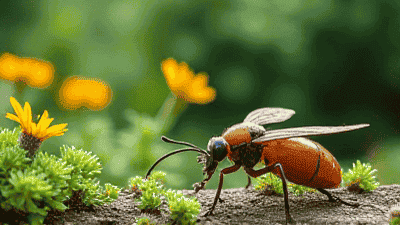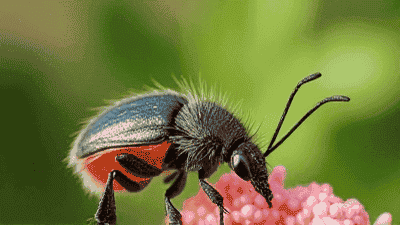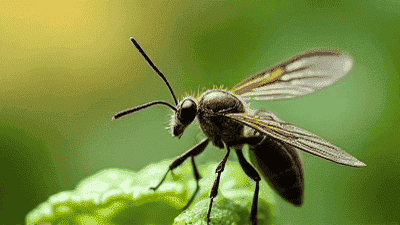
Creating a thriving garden requires more than just planting seeds and providing water; it also involves protecting your plants from pests. Garden pests can wreak havoc on your hard work, consuming leaves, stems, and fruits, ultimately reducing yields and affecting the overall health of your plants. While chemical pesticides are often the go-to solution for many gardeners, they can have detrimental effects on the environment, beneficial insects, and even human health. Fortunately, there are effective, sustainable strategies for keeping your garden pest-free without relying heavily on chemicals.
Before diving into pest control strategies, it is essential to understand the types of pests that may invade your garden. Garden pests typically fall into several categories:
Insect pests are perhaps the most common culprits in the garden. They can cause physical damage to plants, transmit diseases, and impair growth. Common insect pests include:
While technically not insects, mites are tiny arachnids that can cause significant damage to plants. Spider mites are particularly notorious for feeding on the chlorophyll in plant leaves, leading to discoloration and eventual leaf drop.
These mollusks can be particularly destructive in moist environments. They feed on leaves, flowers, and fruits, leaving behind silvery trails of mucus.
While not pests in the traditional sense, weeds compete with garden plants for nutrients, water, and light. Controlling weeds is a critical component of pest management.
Rodents such as mice and voles can create havoc in the garden by gnawing on plants, digging up seeds, and consuming fruit. They are particularly problematic in vegetable gardens.
These organisms can lead to diseases that harm plants. While they are not pests in the conventional sense, their presence can ruin crops and reduce the vigor of your garden.

One of the most effective approaches to managing garden pests is through Integrated Pest Management (IPM). This strategy emphasizes a holistic view of pest control by combining multiple tactics to monitor, prevent, and manage pest populations. The key principles of IPM include:
Monitoring: Regularly inspect your garden to identify pest populations and damage. Monitoring allows you to take action before a minor problem becomes a serious infestation.
Preventive Measures: Implement practices that deter pests before they become a problem. This may include selecting resistant plant varieties, improving soil health, and promoting beneficial insects.
Cultural Controls: Adjust cultural practices to minimize pest problems. This can involve crop rotation, proper watering techniques, and maintaining garden cleanliness.
Biological Control: Utilize natural predators and parasites of pests. This can include releasing beneficial insects or encouraging them to establish naturally in your garden.
Mechanical Control: Use physical barriers and traps to protect plants from pests. This can involve row covers, handpicking pests, or installing barriers to keep rodents out.
Chemical Controls: As a last resort, use pesticides judiciously. When choosing chemical controls, opt for organic or environmentally friendly options whenever possible.
One of the best preventive strategies is to select pest-resistant plant varieties. Many commercial seed vendors offer cultivars bred specifically for pest resistance. For example, some tomato varieties are resistant to certain fungal diseases and nematodes, while leafy greens may have varieties bred for aphid resistance. By selecting these varieties, you can reduce the likelihood of pest infestations.
Crop rotation involves changing the planting location of your crops each season. This practice disrupts pest and disease cycles by preventing pests and pathogens from establishing themselves in one area. For example, rotating legumes with leafy greens or tomatoes can disrupt populations of pests that target specific crops. Plan your garden layout in advance to facilitate rotation easily.
Companion planting involves growing certain plants together to enhance pest control and promote growth. Some plants naturally repel pests or attract beneficial insects that prey on harmful pests. Here are a few effective companion planting combinations:
Encouraging beneficial insects in your garden can naturally reduce pest populations. Ladybugs, lacewings, and parasitic wasps are examples of beneficial insects that prey on pest species. Create a welcoming habitat for these insects by planting a diverse range of flowers, including those that provide nectar and pollen. Additionally, avoid using broad-spectrum insecticides that can harm beneficial populations.
Regular monitoring of your garden is essential for early pest detection. Walk through your garden frequently to look for signs of pest activity, such as chewed leaves, webs, or discoloration. Use sticky traps to catch flying insects like whiteflies or aphids, and inspect the undersides of leaves for hidden pests. Early detection allows for promptly addressing pest issues before they escalate.
Physical barriers can provide excellent protection against pests. Here are some types of barriers to consider:
Keeping your garden clean and organized is vital for pest prevention. Regularly remove debris, dead plant material, and fallen fruit, as these can attract pests and create breeding grounds. Practice good sanitation by cleaning tools and containers to prevent the spread of pests and diseases. Additionally, ensure proper spacing between plants to promote airflow and reduce humidity, which can lead to fungal issues.
Using traps can effectively control pest populations without chemicals. Here are a few types of traps to consider:
Certain natural substances can deter pests without harming plants or the environment. Here are some effective natural repellents:
Birds can play a significant role in pest control, as many species feed on insects and caterpillars. To attract birds to your garden, consider the following strategies:
Timing your planting can impact pest populations, as some pests emerge at specific times of the year. Consider these strategies to avoid peak pest activity:
Maintaining a diverse collection of plants can reduce the likelihood of pest outbreaks. Monoculture, or growing a single crop, makes it easier for pests to establish and spread. Incorporate a mix of vegetables, herbs, and flowering plants to confuse pests and create a healthier ecosystem.

Aphids are notorious pests that feed on plant sap. They reproduce quickly and can weaken plants significantly.
Management Strategies:
Caterpillars stand out as significant threats to leafy greens and other crops.
Management Strategies:
Slugs and snails can quickly decimate tender plants, particularly in damp environments.
Management Strategies:
Weeds compete with garden plants for resources and can harbor pests.
Management Strategies:
Mice and other rodents can be challenging pests to manage due to their ability to reproduce quickly.
Management Strategies:
Keeping your garden pest-free involves a multifaceted approach that combines prevention, monitoring, and intervention without heavily relying on chemicals. Understanding the types of pests, employing Integrated Pest Management principles, and utilizing effective strategies will empower you to create and maintain a healthy, productive garden.
By adopting sustainable practices such as companion planting, promoting beneficial insects, and utilizing natural repellents, you can cultivate a thriving garden ecosystem. The satisfaction of nurturing your plants and protecting them from pests naturally will not only enhance your gardening experience but also contribute to a healthier environment for all.
As you embark on your pest control journey, remember that persistence, observation, and adaptability will lead to successful outcomes. Embrace the challenge of managing pests in your garden, and enjoy the rewards of your efforts in the form of robust plants and bountiful harvests.